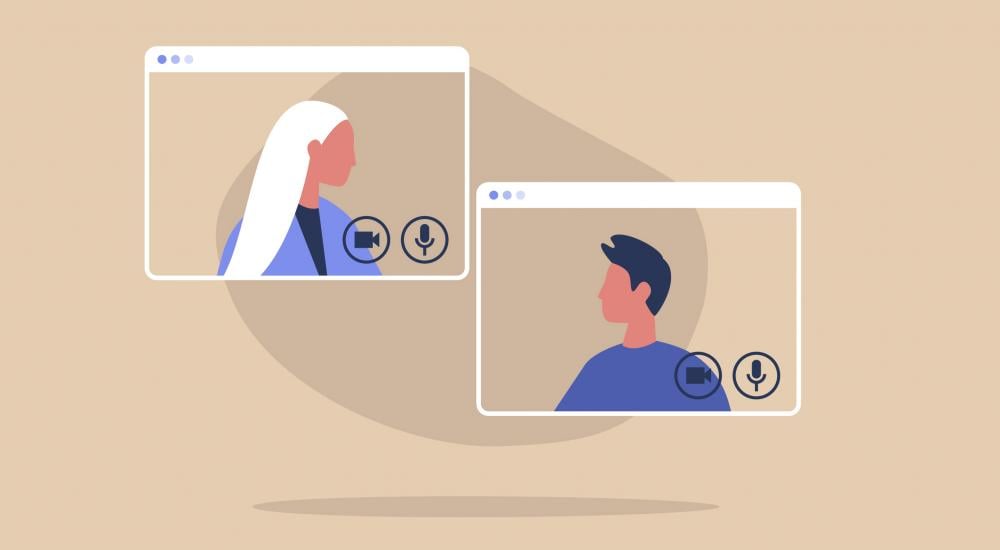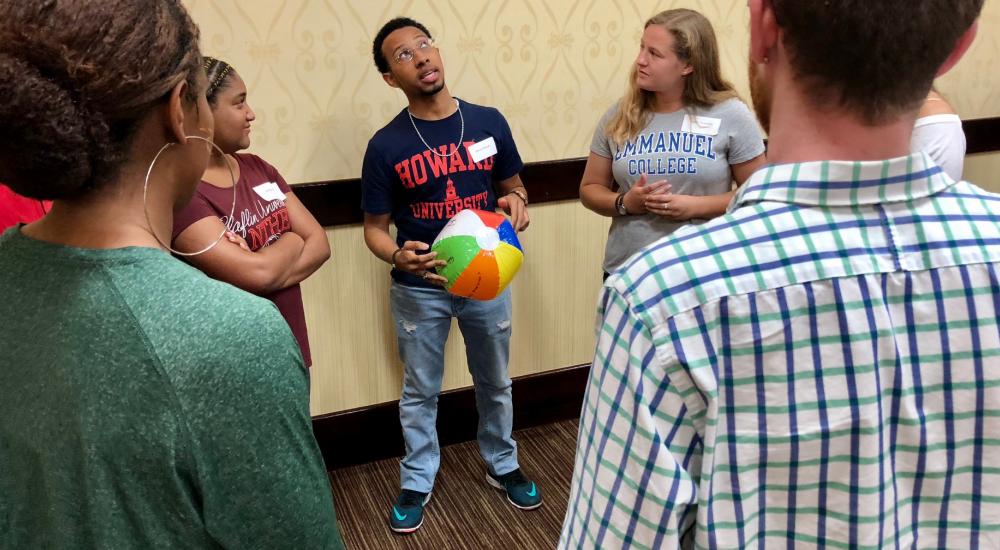Creating a Culture of Study Abroad

As international educators seek to rekindle interest in study abroad experiences, some are examining their campus culture to find ways to make international education an essential part of the educational experience offered by the institution. Doing so requires patience, partnerships, and new approaches to engaging students and allies on campus.
“It takes time to build a culture of study abroad,” says Elizabeth Davis, PhD, director of international experiences at Berry College in Georgia. “You can’t do everything at once, so spend some time figuring out what strategy, or couple of strategies, might work for your institution and go from there.”
Multiple strategies can help international educators build and support a culture of study abroad:
1. Put first things first.
Make sure websites, advising, and promotional materials within the office are available and up to date. Then, examine what options—including short-term, faculty-led, and other nontraditional study abroad opportunities—are available or might be good fits for student needs and interests.
“Study abroad offices often have a common dilemma: limited resources,” says Mariette Thomas, MA, director of the Center for International Education at Loyola University New Orleans, and past-chair of the Education Abroad Knowledge Community. “You have to make the most of what you have and measure the success of what you’re doing.”
2. Partner everywhere.
Especially at institutions where study abroad isn’t a strong aspect of campus culture, it’s essential to be visible and build rapport with other departments.
“Study abroad promotion and advising is a team effort that involves many different offices and individuals on a campus,” Thomas says. “Nearly every office and department on campus… plays a role in helping promote study abroad and making these experiences available and accessible to students.”
- Advisers can help students “ask when and not if” they plan to study abroad, Thomas says.
- Financial aid and scholarship offices can simplify processes involved with supporting the cost of overseas programming.
- Advancement and career development programs can emphasize the value of international experiences.
Alliances with these and other offices can help support broader institutional goals. At Loyola, for example, a partnership with the office of equity and inclusion led to a special two-week study abroad program in Mexico City focused on social justice. The program is free to first-generation, underrepresented, and low-income students, as well as those who have never traveled abroad.
3. Find common cause with other programs.
At Siena College in Loudonville, New York, the study abroad office has joined forces with its counterparts focused on internships, undergraduate research, and community engagement to address a shared cultural challenge—the idea that these high-impact experiential experiences are seen as “extra—not part of the curriculum, but outside of it,” as Abi Cavazos, assistant director for study abroad, puts it.
“We all have the same goal—to help our students learn through experiences in an academic way,” she says. “Not just service learning, but credit-bearing service learning, and not just travel, but credit-bearing travel.”
The offices held a joint presentation at freshman orientation, during which students who had participated in study abroad and other activities shared their experiences with incoming students. Siena’s offices are now discussing with the administration “how we package this for students [in a way] that makes sense and is attractive,” Cavazos says.
“It takes a village to send a student abroad, but the rewards to the student and the campus community are unmatchable.” —Mariette Thomas
“Buy-in from upper-level administration is key to making this kind of collaboration work,” she notes. “It’s hard sometimes when we’re siloed.”
It’s a model pioneered by Indiana University and Purdue University at their joint Indianapolis campus, IUPUI. The campus’ RISE program—reflecting the value of research, international experiences, service learning, and experiential learning—challenges students to participate in at least two of these experiences. “It truly pushed me to grow as a student,” IUPUI student Jordan Williams says. “It’s an opportunity to engage with the community and learn about things that can’t be taught in the classroom.”
While such collaborations may raise concerns about losing the unique identity of study abroad, “if anything, there’s more of a benefit because we become more highly visible as a group and our offices get lifted up,” Siena’s Cavazos adds.
4. Start early—and sustain efforts.
Many study abroad offices present information as part of freshman orientation, but opportunities may come even earlier. “Ask the admissions office if they would include talking about study abroad during campus tours and other marketing materials,” Davis says.
First-year programs or support offices also provide opportunities to extend outreach to incoming students beyond the initial weeks of the academic year. “Gradually, as you do this for each incoming class, you will begin to build a student body who sees study abroad as part of what it means to be a student at your institution,” Davis says.
5. Work with—and support—faculty.
It’s essential to build support for study abroad among faculty, particularly at institutions where faculty members also serve as academic advisers.
“You need to meet and get to know faculty to find out who is already an advocate for study abroad, who could potentially be an advocate, and what misinformation about study abroad might be out there,” Davis says.
To that end, Davis’ office created one-page reference guides for each major that highlights relevant study abroad programs and provides details of the application process. Each sheet, which is reviewed annually, includes quick tips for the major, highlighted programs and class options for each program, a link to the online database of all study abroad programs, information on financial aid and study abroad, contact information, and next steps for students. To respect faculty time, Davis created drafts of the guides with the help of student workers and interns and then asked faculty members and department chairs for feedback, such as a preferred term to travel abroad or recommended classes to take.
Collaboration over time can lead to the development of richer resources. The University of Minnesota’s Learning Abroad Center collaborated with academic departments to develop a wide range of major-specific advising resources, including information about specific study abroad programs, advice for students on what to do while they are abroad and after they return, and guidance on meeting academic plans.
Faculty-led programs also can be supported beyond advising. Loyola’s Center for International Education provides participating faculty with resources on how to market their study abroad programs to students, Thomas says.
6. Tap students in new ways.
Study abroad offices often ask program alumni to discuss their experiences abroad at orientations and other campus events, but that’s just the beginning.
At Loyola, peer advisers meet with fellow students to discuss program options, speak to student groups, and manage the department’s social media accounts.
“They are the face of study abroad from the perspective of their fellow students,” she says. Similarly, students who volunteer as “buddies” to support incoming international students may find the experience sparks their own interest in studying abroad.
Focus groups and surveys can help offices understand why students do—or don’t—decide to study abroad. At Loyola, student surveys determined that on-campus publicity and faculty are the most important elements for driving student interest, according to Thomas. Evaluations and other ways of measuring impact also can provide critical insights.
“That data is key,” she says. “It tells us what’s working, what’s not, and where small adjustments in the future might make a big impact.”
7. Streamline processes.
Identifying the bottlenecks around studying abroad—from applying and paying for programs to ensuring that participants receive transfer credit—can help eliminate frustrations that discourage students. The key, Davis says, is to meet with other departments, learn their processes, and determine how the study abroad office can help meet their needs in better ways.
For example, Davis consulted with the registrar’s office of an institution she previously worked for to develop a transcript evaluation form to streamline the process of evaluating study abroad for academic credit and with the bursar’s office to create a timeline for billing.
“My goal is to make things as easy as possible for everyone involved in the study abroad process—students, faculty advisers, the registrar, the bursar, financial aid, and others,” she says.
8. Rethink student engagement strategies—and keep building.
Focus on continuous engagement, not just programming during orientation and around key deadlines. At Berry, Davis collects student contact information on signup sheets at every event her office hosts and follows up regularly about future events, application deadlines, and programs.
“Reaching out to students in multiple ways and multiple times over an extended period of time is one of the most important ways to sustain interest in study abroad,” she says. “Not many students decide to study abroad on a whim. You need to capture their interest to start thinking about going abroad and then keep them engaged so that they maintain that interest until they do.”
As partnerships and new forms of outreach take hold, it’s important to continue seeking opportunities to expand visibility throughout the institution.
“It takes a village to send a student abroad, but the rewards to the student and the campus community are unmatchable,” says Thomas. •
About International Educator
International Educator is NAFSA’s flagship publication and has been published continually since 1990. As a record of the association and the field of international education, IE includes articles on a variety of topics, trends, and issues facing NAFSA members and their work.
From in-depth features to interviews with thought leaders and columns tailored to NAFSA’s knowledge communities, IE provides must-read context and analysis to those working around the globe to advance international education and exchange.
About NAFSA
NAFSA: Association of International Educators is the world's largest nonprofit association dedicated to international education and exchange. NAFSA serves the needs of more than 10,000 members and international educators worldwide at more than 3,500 institutions, in over 150 countries.
NAFSA membership provides you with unmatched access to best-in-class programs, critical updates, and resources to professionalize your practice. Members gain unrivaled opportunities to partner with experienced international education leaders.














